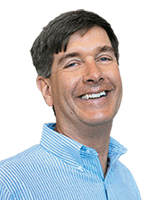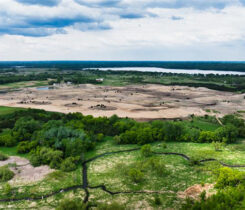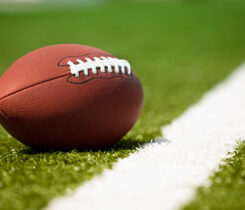10 keys to enhancing turf survival this winter
Brian Horgan, Ph.D., is a professor of turfgrass science at the University of Minnesota. Winter survival of turf is one of Brian’s research interests and he can be contacted at bphorgan@umn.edu.
Q: What is the most common cause of winter injury on putting greens in Minnesota?
There is no single consistent cause of winter injury from year to year, or golf course to golf course or even within a single golf course. Turfgrass dies because of ice cover (anoxia), crown hydration, desiccation and direct low temperature kill or more often two or more of these factors in combination. It can be very difficult to identify the specific cause of winter injury.
Q: What can be done in the fall to minimize winter injury?
- Interseed with creeping bentgrass in early September If you have thin turf due to summer stress or a large population of annual bluegrass, interseed in late August or early September in conjunction with aerification. Creeping bentgrass is more winter hardy than annual bluegrass.
- Aerify in early September Aerify and topdress in early September to create good growing conditions the remainder of fall and to reduce thatch accumulation.
- Monitor soil moisture in the greens Provide sufficient water all fall to encourage healthy, actively growing turf. Be sure the soil is at field capacity before you blow out the irrigation system. If fall is warm and dry, delay blowing out of the irrigation system in order to keep irrigating. Correct any drainage problems on greens. Make sure the collar does not block the flow of water off the front of the green.
- Fall nitrogen fertilization Our thoughts on fall nitrogen (N) fertilizer for northern climates like Minnesota have changed greatly in the last few years. Maximum fertilizer uptake efficiency occurs in September compared to October or November. Therefore, fertilize once or twice in September with 0.5 to 0.75 lbs. nitrogen per 1,000 sq. ft. at each application with a predominately soluble N source to maximize carbohydrate storage. Continue spoon-feeding throughout the fall and late fall with 0.1 to 0.2 lbs. nitrogen per 1,000 sq. ft. every 7 to 14 days.
- Covers Before buying covers, ask what winter injury problem(s) you are trying to minimize? Do all the greens need the same type of cover? No single type of cover protects from all winter injury problems. It is possible that more than one type of cover will be needed to protect all 19 greens at the golf course. Topdressing heavily late in fall is a good strategy to help minimize winter injury.
- Fungicides Snow mold protection is a necessity on greens on most northern golf courses. Consult your local turfgrass pathologist for fungicide recommendations. You can also check the University of Wisconsin Turfgrass Diagnostic Laboratory (www.tdl.wisc.edu) for results of their snow mold fungicide trials.
- Measuring tools Use your soil moisture meter to precisely measure moisture in soil this fall to make sure the greens have received sufficient irrigation to prepare for winter. Keep a record of the moisture level and compare it with winter
 injury in the spring to start to build a site history.
injury in the spring to start to build a site history. - Wetting agents and plant growth regulators (PGRs) In theory, both wetting agents and PGRs applied in fall may be beneficial in minimizing winter injury, but there are no data yet to support their use in this fashion. The Minnesota GCSA has increased their dues to fund research at the University of Minnesota to minimize winter injury including the benefit of fall applications of wetting agents and PGRs.
- Prevent winter traffic to the greatest extent possible.
- Communication Let the golfers know about the steps being taken this fall to minimize winter injury. Emphasize the steps being taken now are to provide good playing conditions next spring.
Clark Throssell, Ph.D., loves to talk turf. Contact him at clarkthrossell@bresnan.net.










